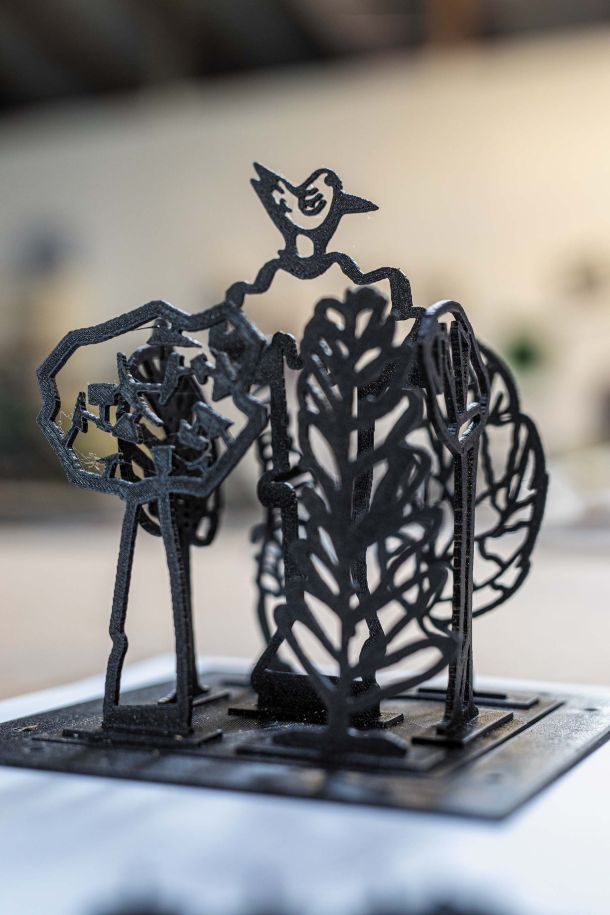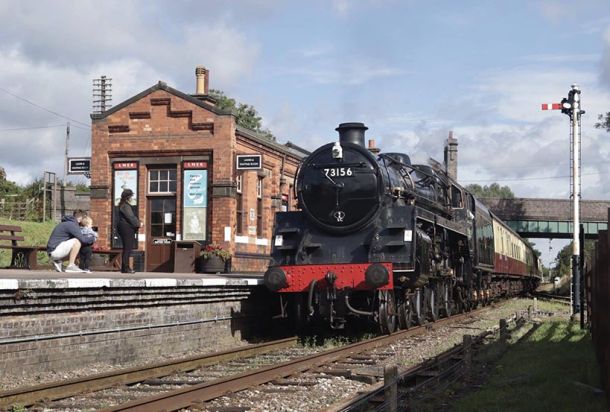Wildlife On Your Doorstep
For a nature reserve covering 450 hectares Idle Valley Nature Reserve, on the outskirts of Retford, is something of an undiscovered gem. Sometimes referred to as Sutton and Lound Gravel Pits, the name given to the Site of Special Scientific Interest (SSSI) which the nature reserve forms part, the site has been popular with birdwatchers for decades but it is only within the last dozen or so years that it has become more widely known.
Its increased popularity followed the development of the car park and visitor facilities at the southern end of the reserve, adjacent to Belmoor Lake off the A638 North Road. The visitor reception, café and shop were established thanks to a partnership between Nottinghamshire Wildlife Trust and North Notts College back in 2008, the same year that Nottinghamshire Wildlife Trust secured funding form the National Lottery Heritage Fund to purchase the nature reserve from its former owners Tarmac. The vast size of Idle Valley makes it an ideal destination for those wishing to escape the crowds.
The reserve is one of the most important areas in the East Midlands for passage birds during spring and autumn migration and for overwintering wildfowl. Birdwatchers visit due to the year-round interest provided by the sheer scale and variety of habitats, as well as the prospect of unusual birds turning up during migration.
The site has also now become a favourite haunt for local residents wishing to walk their dogs or looking for a day out exploring the wide open spaces with their family.
The centre, provides a great introduction to the reserve, with large floor to ceiling windows giving enticing views looking north across the Idle Valley and from here, visitors can take a gentle circular walk around Belmoor Lake area on flat, mainly surfaced, footpaths with opportunities to enjoy views of the River Idle and birdlife on the lake.
For those wanting a more energetic walk the reserve offers a number of options. The River Idle provides a natural navigation aid as it flows north and in a little over an hour visitors can reach what many consider the heart of the reserve – the area around Chainbridge Lane. From here it is possible to follow the River towards Neathome Lane and Clayworth Copse, a private woodland, via a right of way from Neatholme footbridge leading NE which eventually leads over farmland to Clayworth village. The area has a mix of hawthorn and blackthorn scrub and open grassland, plus willow and oak trees. In autumn flocks of winter thrushes often feed here and short-eared owl and hen harrier can be observed hunting. The eastern boundary has a wide water filled ditch which often produces sightings of kingfisher, green sandpiper and little egret. Looking north-east from the footbridge you may see foraging geese on Mattersey Common.
The immediate vicinity of Chainbridge Lane gives access to some of the reserve’s key birdwatching spots. On reaching the lane, the area known as Tiln North is on the eastern bank of the river. Whilst not officially part of the reserve, the area has been managed by the Wildlife Trust for many years. This is a good place to look for birds such as marsh harrier, great egret and stonechat. At this time it is also a great place to watch short eared and barn owls hunting the grasslands in search of small mammals such as voles as the afternoon light fades.
Whooper swans may be seen on Clayworth and Hayton Commons. These birds are regular winter visitors that mingle with the native mute swans and if you look carefully you may also pick out Bewick swan, an uncommon and declining winter visitor. November can also be a good time for bittern, a scarce winter visitor, although they can be elusive in their preferred reedbed habitat.
A short walk west along the lane will take you past Chainbridge Wood on your right and after about 400 metres a break in the vegetation leads to a path and a well-placed viewing screen giving wonderful vistas over Chainbridge Scrape. With its mix of open water and shallows, this area is often home to large numbers of ducks, swans and geese in winter. In addition to good numbers of wigeon, pochard and goldeneye, the reserve is a well-known refuge for significant numbers of gadwall. The scrape is also a good location to see great egret. Whilst once a rare species in Notts, it is now almost ever present with small numbers visible throughout the winter giving visitors the chance to enjoy the sight of these impressive herons stalking their prey in shallow water.
Moving north beyond Chainbridge Lane areas such as Cross Lane Marsh and Neatholme Fen, which is in the direction of Lound Village, provide more options for the dedicated wildlife watcher looking to enjoy a day in the field. Look and listen for bullfinch in the mature hawthorn hedgerows as their plaintive ‘peooo’ whistle often revealing their presence. Those looking to enjoy a morning or afternoon visit can retrace their steps along the river or pick up the path which heads south, just a little further along the lane. This path gives views over an area known as Alan’s Meadow, where lapwing and meadow pipit may be present, and Chanbridge Pit beyond. At this time of the year the pit holds a good variety of wildlfowl.
Close and patient observation of across Chainbridge Pit, which can also be viewed from the riverside looking west, may reveal a bittern. This superbly camouflaged member of the heron family has become a regular winter visitor to the reserve but spotting them can be a challenge but all the more rewarding for that!
Get Involved
At the time of writing Nottinghamshire Wildlife Trust is working closely with RNN Group to reopen the car park and facilities. Details about the reopening can be found at nottinghamshirewildlife.org and on the Idle Valley Facebook page www.facebook.com/IdleValleyNatureReserve
The reserve has remained open throughout the lockdown period and can also be accessed on foot from the villages of Lound, Hayton and Tiln as well as via Chainbridge Lane (no official car parks on the lane but space to park at the road side) The reserve can also be accessed from Hallcroft Road.









